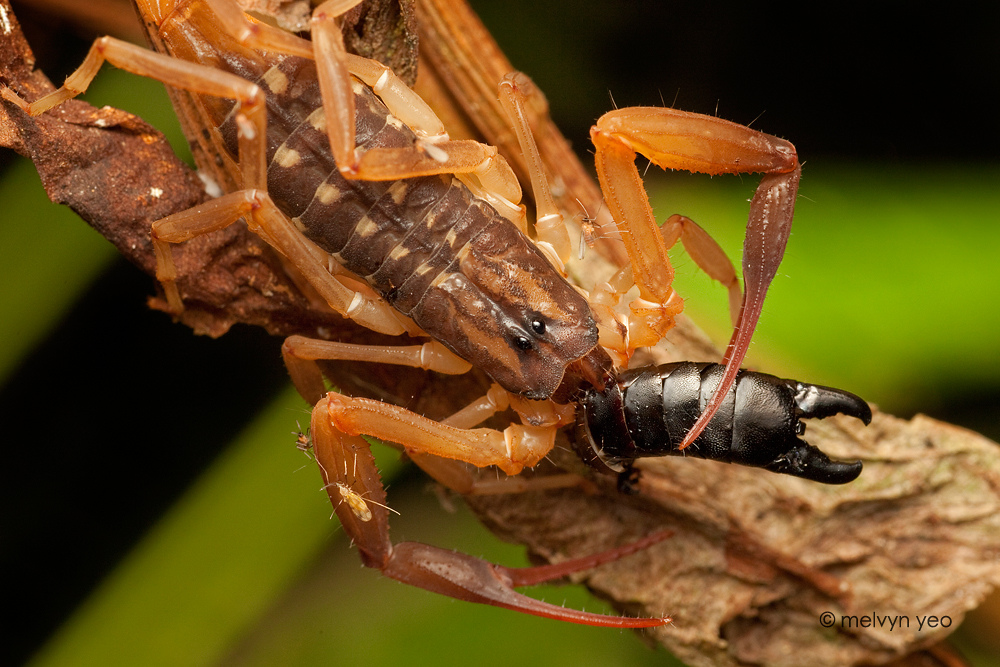 |
| Scorpion eating Earwig |
They have eight legs and are easily recognized by the pair of grasping claws and the narrow, segmented tail, often carried in a characteristic forward curve over the back, ending with a venomous stinger. Scorpions range in size from 9 mm (Typhlochactas mitchelli) to 21 cm (Hadogenes troglodytes).
Unlike the majority of arachnid species, scorpions are viviparous. The young are born one by one, and the brood is carried about on its mother's back until the young have undergone at least one molt. Before the first molt, scorplings cannot survive naturally without the mother, since they depend on her for protection and to regulate their moisture levels. Especially in species which display more advanced sociability (e.g. Pandinus spp.), the young/mother association can continue for an extended period of time. The size of the litter depends on the species and environmental factors, and can range from two to over a hundred scorplings. The average litter however, consists of around 8 scorplings.
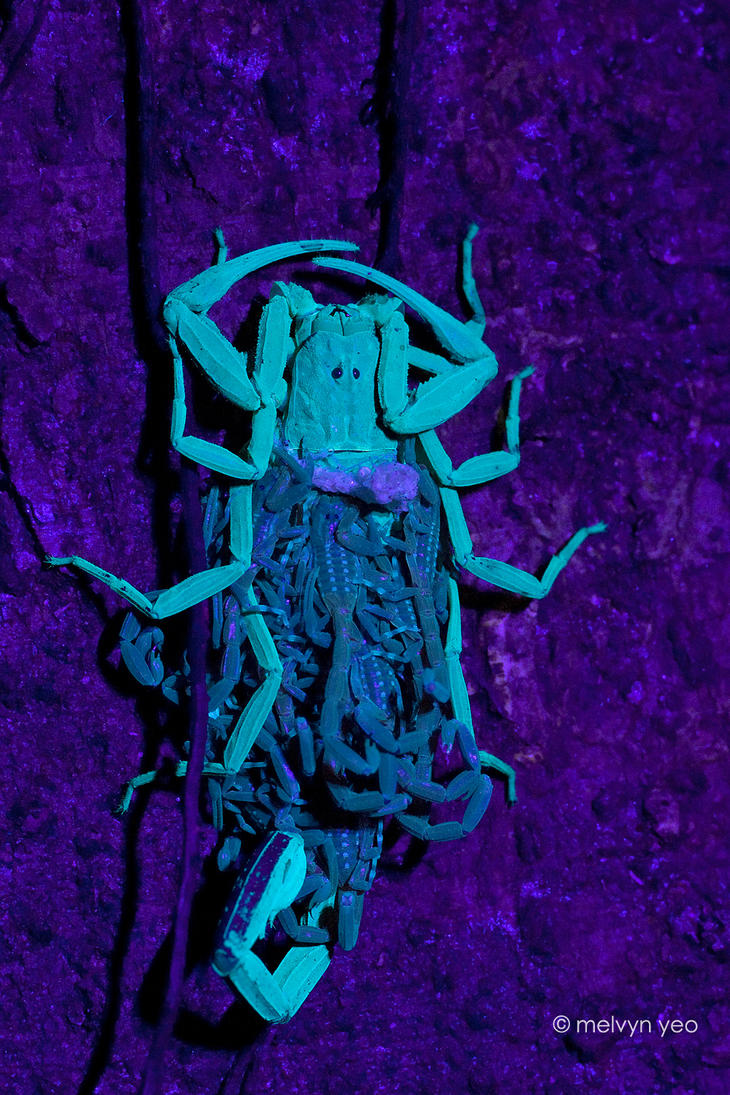 | ||
| Shine under UV light. |

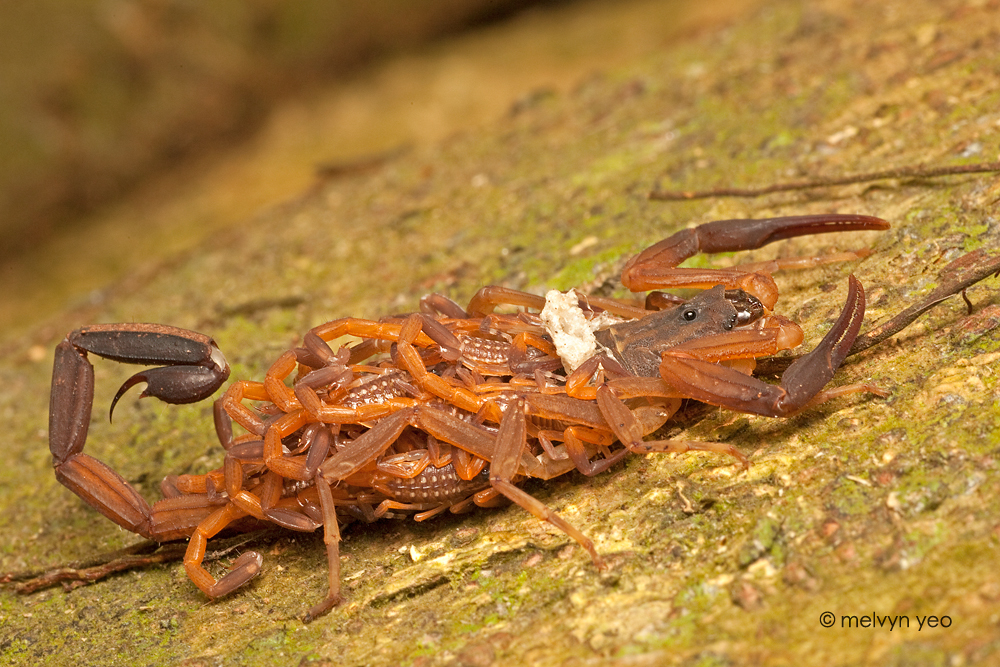
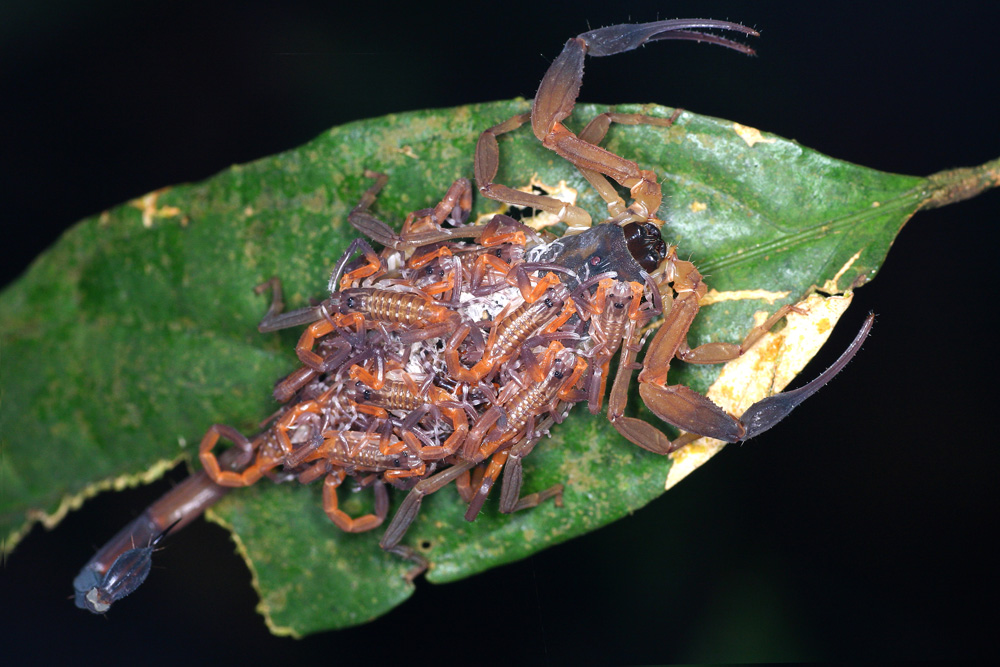







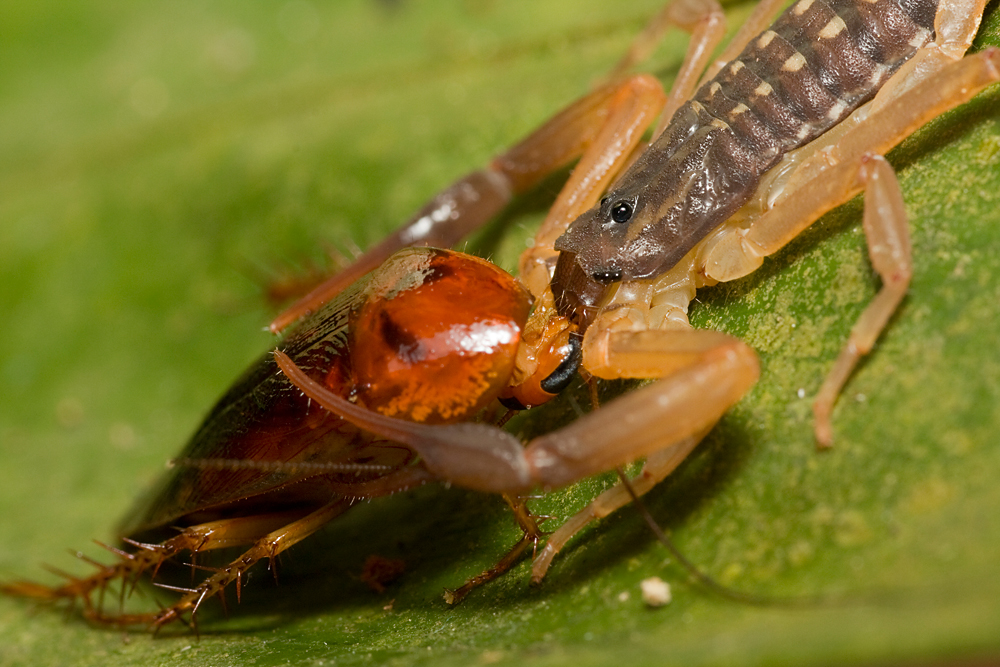
No comments:
Post a Comment